Using Cinematic Locations: FREE Film School
Anyone who works in theatre will know that set design is a huge part of creating an effective drama or show. In fact, when my friend at art college (British director Jonathan Glazer) was choosing which degree to do, he opted for set design. With film and video, our set design is no less important.
The difference is that, as well as creating sets, with cameras we can film “on location”. We can also use computers to generate our “set”. For example, using green screen and computer generated images.
When filmmakers are first starting out, we’re trying to get a grasp of everything. Often, we then underappreciated the importance of the set. A mistake is to assume if a location is what is written in the script heading it’s “job done”.
For example, the script says: INT. ROGER’S BEDROOM – DAY. Then, we find a bedroom appropriate to the character and we think nothing more until we turn up to film. Meanwhile, in professional filmmaking, a lot of effort is put into finding interesting and “cinematic” locations.
So, this is one often misunderstood reason why low budget films look low budget. If you are shooting in a boring location, no amount of expensive cameras, lights and highly trained crew is going to make it look cinematic.
On the other hand, filming in an interesting location can save you time trying to make your footage look good. It will also inspire you to be more creative when filming. So what should we do to improve the set design or locations we are filming in?
Finding great locations
Rather than simply accept the first location that meets the location name, take more time looking for interesting locations.
For example, many low-to-no budget films are set in woods or forests. This makes sense as they can be atmospheric and they’re usually free. Plus you can often find a secluded spot where your filming won’t be interrupted.
However, perhaps there’s an extra feature you can add to your filming. Is there a disused army bunker? How about an old, abandoned building. Even if you don’t film in it, having it in the background can make the shot more interesting.
When shooting his iPhone scifi film Robot Attack, Brian Vowles shot most of it in some abandoned nearby buildings. He also used local architecture to great effect: flyovers, railway tracks, crumbling bridges and so on. Plus abandoned cars were added using CGI (but he still used existing architecture in the background).
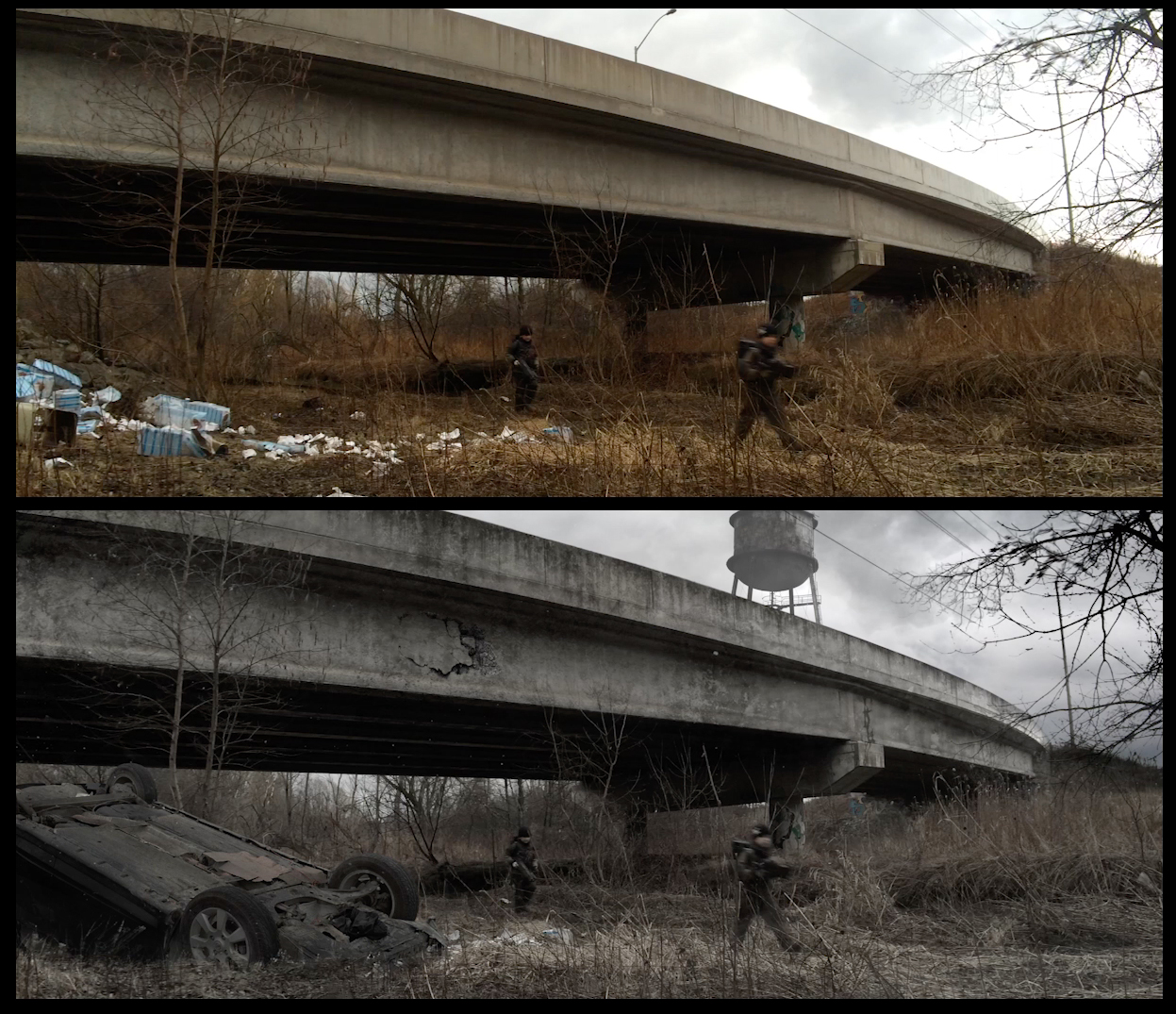
Notice the added cracks in the concrete, the trached car, the water tower.
Going back to Gareth Edwards’ 48 Hour film challenge short, you can see how existing locations were used (for free) to create a mood and an atmosphere. In this shot, a disused bunker:
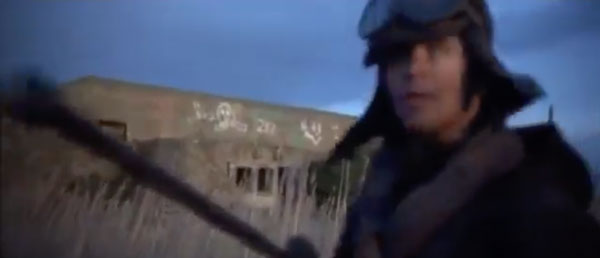
In this shot, a glass walled futuristic-looking tunnel (probably a public walkway somewhere in London).

Rather than simply shoot on the beach at dusk, Edwards uses this old, ominous-looking structure in the background. This building never has anything to do with the plot, but it communicates the feeling of the story.
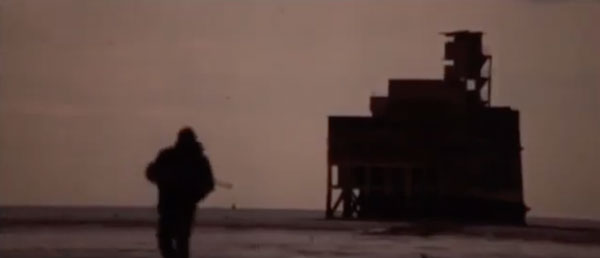
Bear in mind, all these locations were free to use. So careful thought about what local and free film “sets” you have access to can make a big difference to your shoot.
What about non-SciFi?
So, both these examples are post-apocalyptic science fiction films, but the principle applies to any genre. Let’s look at some stills from recent indie hits:
The Dead Don’t Die
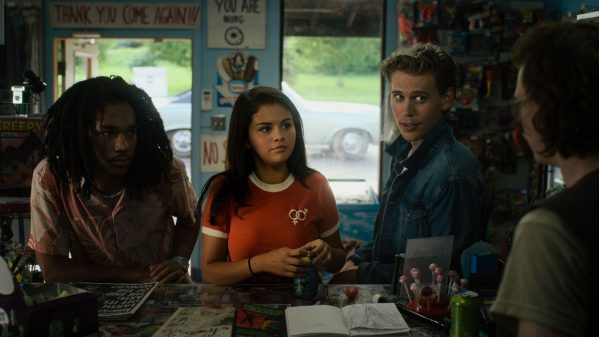
Look at home detail there is in this location. Posters and other items in the background, more items in the foreground. Is this even too busy?
The Farewell
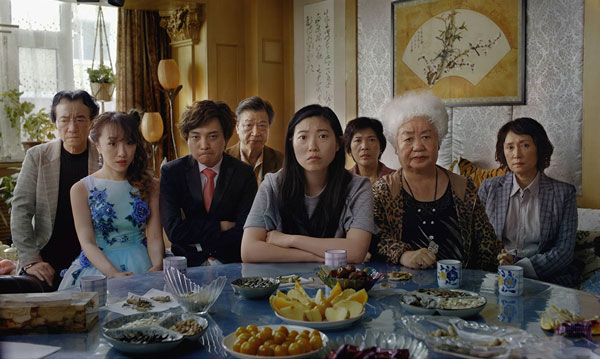
Notice how this house in The Farewell has so much going on in the background. All these details add value to the cinematography and help communicate the story. Not just the building, but the curtains, the plants, the wall hangings and so on. Much of this will have been added by the prop master and set designer for the film.
The Last Black Man in San Francisco
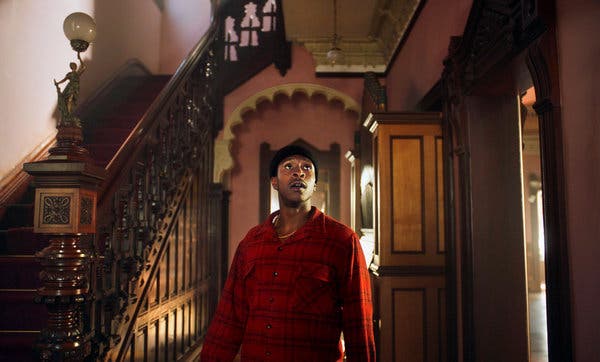
The Last Black Man in San Francisco started out as Kickstarter project back in 2015. But the film has finally made the big screen this year. Now look at how much work the location above is doing for the filmmakers.
There’s so much character in the image above and the location is doing as much for the scene as the actor. See how the light is reflecting off the polished wood. The grand staircase creates depth and perspective. The door to the right can be used to be creative with light coming from the room on the other side.
Brittany Runs a Marathon
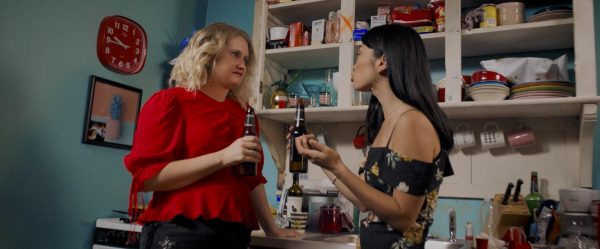
You might think this is just an ordinary kitchen, but look again. How much colour there is in the background? Lots.
If those had been closed cupboards behind them, there would have been far less interest in the shot. The cups, the wine bottle, the small framed picture, the clock, the everyday kitchen stuff. Also, note the blue walls and the off-white painted wood (white walls can be a nightmare for a DoP).
Dress your location
So, the above images illustrate how it’s not always just about finding an amazing location. Most likely, these locations will have been very carefully dressed. This is usually an added expense, so us micro-budget filmmakers have to work harder to get more from less, as usual.
This is another great reason to shoot as much as possible of your story in one location. While you have to spend time and money finding and dressing your location, reducing the number of locations reduces this aspect of the budget. Better to focus your time and money into one location and make it look awesome, than have multiple locations that are less well designed.
For example, you might have one or two fantastic locations. But due to time and budget, the rest of your locations are average looking. Scenes shot in these locations now let down the whole film and reduce the overall cinematic look you’ll get.
This Week’s FREE film School Exercise
If you have a script or story you are currently working on, you can now go through scenes thinking about how you will access and dress great locations. Once you find one or more great locations, think about moving the story so that as much as possible takes place there.
If you don’t have a script yet, you can still think about the locations available to you. Why not go for a walk in your local area and see what turns up. Check Google maps a, you might discover interesting abandoned buildings nearby.
Location scouting is one of the most important (and fun) aspects of filmmaking. Finding a great location can even inspire you to get writing that screenplay you’ve been putting off. So get out and get exploring!
Eager to learn more?
Join our weekly newsletter featuring inspiring stories, no-budget filmmaking tips and comprehensive equipment reviews to help you turn your film projects into reality!
Simon Horrocks
Simon Horrocks is a screenwriter & filmmaker. His debut feature THIRD CONTACT was shot on a consumer camcorder and premiered at the BFI IMAX in 2013. His shot-on-smartphones sci-fi series SILENT EYE featured on Amazon Prime. He now runs a popular Patreon page which offers online courses for beginners, customised tips and more: www.patreon.com/SilentEye

